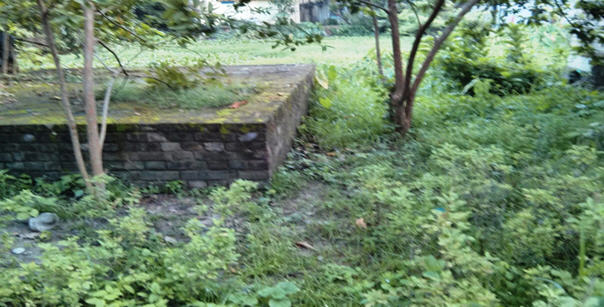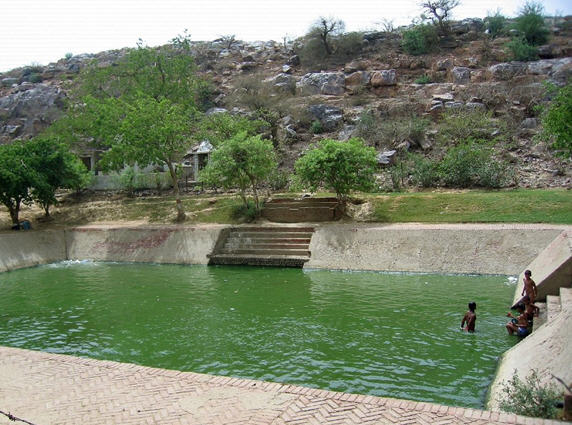Tamluk (Bengali: তমলুক) is the district headquarters of PurbaMedinipur district of West Bengal, India. Present day Tamluk is the site of the ancient city variously known as Tamralipta or Tamralipti. The present town is located on the banks of the Rupnarayan River close to the Bay of Bengal. According to some scholars, Tamluk derives its name from the Sanskrit word Tamra Lipta meaning “full of copper”.
It was once a seaport, now buried under river silt. For this reason, Tamluk has many ponds and lakes remaining today.
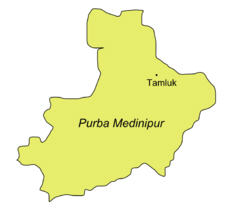
Jishnu-Hari Mandir
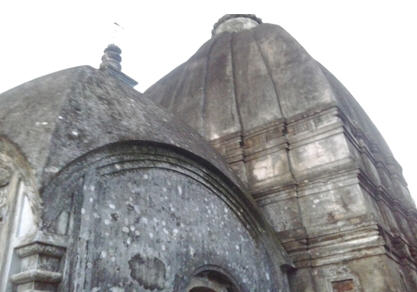

According to Jaimini’s Mahabharat, Supreme Lord Sri Krishna and Arjun came here to release the divine horse of AshwamedhYagna from King Tramradhwaja. The land of Tamluk is always divine and sacred because it was touched by the lotus feet of Sri Krishna. Mahabharat sung by Jaimini rishi mentions elaborately about this incident.
According to local devotes , in various Vaisnava religious writing ,the name Tamluk is mentioned as the next “Vrindavan” where on the next Kalpa ( Next Creation of the universe) Sri Krishna will play his Ras Leela. They quote the following verse of Sri Krishna himself confessing his affection with Tamluk to Arjuna.
Tamoliptat Param Sthanam Nasmakam Pritirishyate
Mamakam Hridayang Lakkha Jathatyajyang Tatha Maya
Tamoliptang Hi Natyajyamidameba Su nischatam
Tyajyami Sarba tirthani Kale Kale Yuge Yuge
Tamoliptantta Kausteya Na tyajyami Kadachana.
It means: Tamluk is the supreme place of religion, the way my wife Lakshmi Devi stays in my heart, Tamluk is alywas nearer to my heart in such a way, Again and again, time to time, i will leave all pilgrimage, but will never leave tamluk for a moment even. Sripath – Samadhi of Srila Basu ghosh and the Gauranga Mahaprabhu Mandir (Narpota).

Lord Chaitanya’s Visit to Tamluk Lord Shri Chaitanya took sanyas at Katwa on 14th January, 1510. After staying 14 days at Santipur in Nadia, he set off for Nilachal. This is mentioned in ‘ChaitanyaBhagwat’:
“Prabhu bale,amic halilam nilachale kichu dukkha nava biho tomra sakale”
Shri Chaitanya dev on his way to Nilachal from Shantipur went to Aatisara, and then chhatrabhog (now diamond harbour). Then he reached Tamluk on 20th Falgun in 616(Bengali). It is mentioned in ‘ChaitanyaMangal’ by Lochan Das thakur.
“Tabe sei mahaprabhu chali jay pathe, tamoluke uttarilo mahapunya khetre. Bramha kunde snan dekhi Sri Madhusudan Premay abash tanu anandita mon”
It is also mentioned in 3rd,5th,6th sarga,2nd sloka of the karcha of murarigupt:
“Tamolipte mahapunye Hare: dadarsha madhusudanam”
Gopinandan Goswami wrote in his “Tamluke SriKrishna Chaitanya”:- Lord set out his journey from diamond harbour at late night and reached Tamluk as well as Orissa at dawn. That time ,Tamluk, as well as Medinipur were included within Orissa. In Tamluk, Shri Chaitanyadev left all members and went alone for begging. After becoming sannyasi it was his first begging here in Tamluk.
In Chaitanya Bhagwat:
“Ek deb sthane thuia sabakare,Apone chalila prabhu bikha karibare,
Santoshe Jagadananda karila randhan,
Sabar sanhati prabhu karila vakkhan”. He not only stayed at Tamluk but also spent the night by doing Sankirtan’
Basudev Ghosh settles in Tamluk
“Guna tunga sakhi eba Basu Ghose Khyati,
Gouranga sakha Tamluk ete basati.”
Shrila Basudev Ghosh Thakur was born in Burdwan in uttarariyo kayasta family. He was a famous lyricist.
As Sri Chaitanya Mahaprabhu ordered, Shrila Basudev Ghosh returned from Puri with Nityananda Prabhu, Ram Das and brother, Madhav Ghosh. As Sri Chaitanya Mahaprabhu was no more in Nadia, all the devotees of Nadia were grief stricken. In this sorrowful condition, Srila Basudev ghosh could not stay anymore in Nadia. So he came here and started to live in a hut in Tamluk far away from Nabadvip but close to Puri. People of Tamluk were thus blessed with his association.
When Shrila Basudev Ghosh heard that Shri Mahaprabhu has disappeared in 1534 from Puri, he decided to end his life by entering into samadhi alive. This incident is mentioned in the book Shyamanand prakash. As Basudev Ghosh wished, his disciples dig a grave. Shri Basudev Ghosh with his wife entered into the grave by bandaging their eyes and then asked his followers to fill in the pit. Meanwhile while seated in the pit, Srila Basu ghosh went in deep meditation. When the night was thick the bandage was unfastened itself. Shree Mahaprabhu appered as a child Nimai in front of Shrila Basudev Ghosh. He was charmed when Shri Mahaprabhu touched him. As Shrila Basudev Ghosh wished, Shree Mahaprabhu promised to stay in tamluk. Shri Mahaprabhu was bonded by the devotional love of Srila Basudev Ghosh. He manifested his self same deity of Nimai and asked Basu ghosh to worship him and thus feel his presence always. It was a wonderful sight. In this way,Sri Chaitanya Mahaprabhu appeared as deity form in tamluk. As Shrila Basudev Ghosh was about to be engraved alive here, this place received name ‘Naropota’.
After many years when Basu ghosh disappeared, the worship was affected. A devout pujari had to take the deity away from tamluk in fear of tyrant rulers and deity haters. It was later during the powerful preaching of Shyamanand prabhu that Shyamananda found this deity and got the deity back to Tamluk and again the pomp worship began. Even today pujaris in the line of Rasikananda and Shyamananda prabhu are worshipping this deity.
. 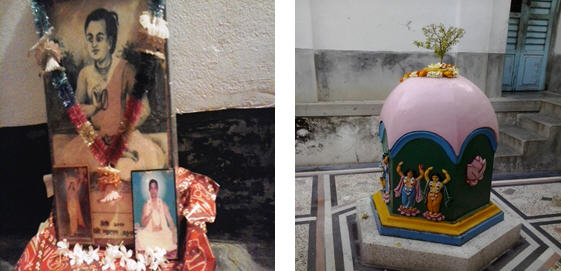
Deities in the temple – Child Gour Sundar deity of Srila Basudeb Ghosh Thakur Goswami. After few years of Basu Ghosh disappearance, Sri Shyamananda Prabhu and Sri Sri Rasikananda Prabhu reinstallatied Sri Sri Gour Sunder. Later Smt. Madhavi Dasi (sister of Sikhi Mahiti) came here and installated the deity of Shyam Chand. Later other acharyas came and installed deity of Lord Jagannath.

Thus you will find on the Main altar – Krishna (Shyamchand),Gaura sundar and Jagannath gracefully give their audience to all. This is much in lines with the famous bhajan of Basudev ghosh – Jei Gaura sei Krishna sei Jagannath. All three are same and are worshipped on the same altar in the temple at the very place of Sripath (house) of Srila Basudev ghosh. Across the temple is a beautiful tree under which samadhi of Srila Basudev Ghosh is situated.
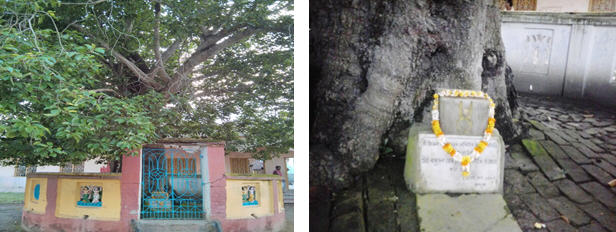
As per local devotees, just few metres away there is a place where Smt Madhavi devi resided and her samadhiis present.
